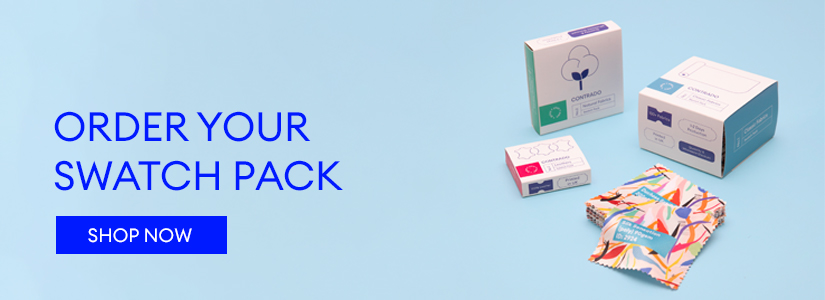What is brushed cotton?
When talking about fabrics, everyone has heard of cotton. It is made from the cellulose fibres of the cotton plant, which get spun into threads that are then woven into fabric. Cotton has been around for centuries with diverse species of the plant found Mexico, Australia and Africa. It won’t be farfetched to say that all of us have some form of clothing or accessory that is made from this material.
But what is brushed cotton? It is a woven cotton fabric that is, as the name suggests, brushed to create a soft, napped texture. Essentially, ‘brushed cotton’ is the result of a process carried out on regular cotton that takes this multifarious fabric to the next level of aesthetics and functionality.
How is brushed cotton made?
Brushing is a finishing process used to raise the surface fibres of a fabric. The fabric undergoes a mechanical brushing process in which fine, metal brushes carefully rub the fabric to produce fine fibres from the woven yarns, creating extra softness on the surface of the fabric. Cotton can be gently brushed on both sides to make it soft to the touch.

Chiara Rubinelli, from the Italian mill Grandi & Rubinelli says, “Usually, when most fabrics are finished, a flame is applied to singe away any raised fibres so its surface is completely smooth. Brushed cotton undergoes the complete opposite treatment. We do not remove the fluff on the surface of cloth, but instead, exaggerate it. We do this using specially engineered mechanical metal brushes, which teases the fibres out from the surface of the fabric. It’s a technique that goes back many centuries – originally, it was done using the dry, spikey heads of thistles. This creates a beautifully soft handle, similar to a fine wool cloth, but it’s incredibly comfortable against the skin, absent of any itchiness.”
What is brushed cotton used for?
Brushing cotton creates raised fluffy fibres that trap air particles, thereby improving the insulation capacities of the fabric. Dr Hugh Gong of the School of Materials at Manchester University says, ‘Anything that reduces the contact with the skin reduces the amount of heat being conducted away from our bodies.’
Owing to this, brushed cotton is widely used to bedding items such as sheets and pillowcases as well as garments. Luca Faloni, the owner of Italian brand, Luca Faloni, says, ‘brushed cotton…provides protection against wind chill, but it doesn’t make you feel overheated. Usually, during cooler spells, you might need to wear a V-neck in-between your shirt and jacket, but with brushed cotton you don’t have to as it’s such a good insulator; it saves you the trouble of bulking up with multiple layers. People normally are used to poplin or Oxford cotton which are very fresh, crisp and light; brushed cotton has all the comfort of a T-shirt, but is a far more premium and elegant material.”

What is the difference between brushed cotton and flannel?
The terms are sometimes used inter-changeably though there is a difference. Brushed cotton involves brushing on the face side, resulting in a fabric that is soft, retains heat but is also breathable. Flannel or Flannelette fabric is brushed on both sides, resulting in a fuzzier, warmer and thicker fabric. Not to mention, flannel was originally made from wool but now is often made of cotton or other synthetic materials.

What is brushed cotton like to sew with?
Cotton per se is remarkably easy to sew with. Experienced seamstresses would recommend using cotton for beginners. The fabric doesn’t slip, is easy to iron and easy to wash if you want to pre-shrink the fabric before starting your project. The fabric is machine washable at 30-40 degrees at cold settings, especially for coloured fabrics.

Advantages of Brushed Cotton
• Durable
• Breathable
• Soft to the touch
• Easy to care for
• Versatile
Disadvantages of Brushed Cotton
• Prone to shrinkage
• Can pill over time
Printing on Brushed Cotton
Printing on brushed cotton has never been easier. You can use your photos, or even your artwork, and upload to our design interface. From there you can choose whether you want to make your design bigger, smaller, or even to repeat the design. This is a great way to turn your favourite patterns into your next craft project, and can be done in just a few clicks.
Now that you know what is brushed cotton, get your hands on our swatch pack to pick the fabric for your next DIY project.


